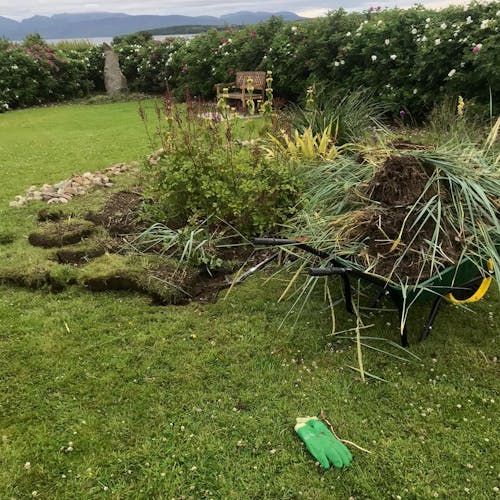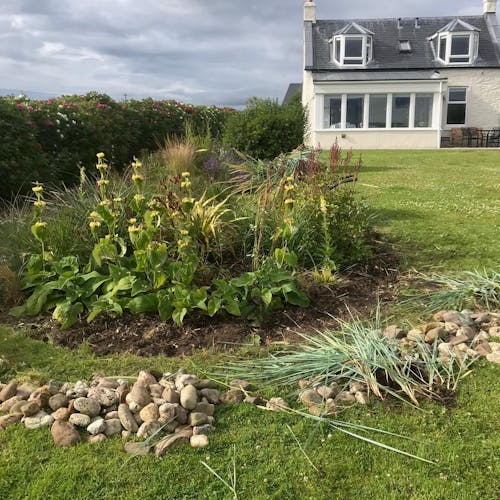
Gardeners will tell you that it is a fantastic past time filled with joy and a love of nature. However, they will also tell you that it does not come without its failures and losses......Farewell to Elymus Magellanicus
Parting is such sweet sorrow, but sometimes you just have to admit defeat. I once declared my love for the Elymus Magellanicus (Blue Wheat Grass) and vowed to persevere despite its invasive nature. However, reality—much like Scottish midges—has a way of biting hard. I've had to concede that this plant demands constant maintenance, which isn't feasible since I can't be at Seaview all the time. Besides, my budget doesn't allow for hiring someone to continuously manage its relentless spread.
The rhizome roots had aggressively invaded the garden bed, tangling with various plants and extending nearly 40cm into the surrounding lawn. This necessitated not only the brutal removal of the clumps but also painstakingly digging out the small roots around them. I even had to dig up portions of the lawn to sift through the turf sods. This was the straw that broke the camels back - as we were unable to source any replacement turfs locally I made the decision to just get rid of most of the affected turf and just make the bed bigger! Despite these efforts, I doubt we'll be able to eradicate it entirely and will need to remain vigilant for the foreseeable future. I will also have to get some more plants, a task that took the edge off some of the pain - I love sourcing plants😀🪴
Once it had all been removed, I explored a few replacement options based on what plants I already had to hand. There were other grasses which were being smothered elsewhere in the bed, such as three small Blue Festuca and a struggling Miscanthus Morning Light, and I relocated them to the vacant spot, but I doubt they will offer the same dramatic backdrop. I'll miss the tall blue foliage, which provided a stunning contrast with the Astilbe Purpurlanze and Sanguisorba Red Thunder.
The whacky looking Phlomis are doing really well though and have multiplied, they should provide some much-needed height at that end of the bed. And the Kniphofia Alcazar is looking fantastic, its fiery red torches reaching up to the sky. There are two in the bed, but one was so dwarfed by the Elymus that it had not grown much at all, I am hoping now that it has access to the light it will roar away and do as well as the other one. As you can see from the photos, they look great with the purple Astilbe.








